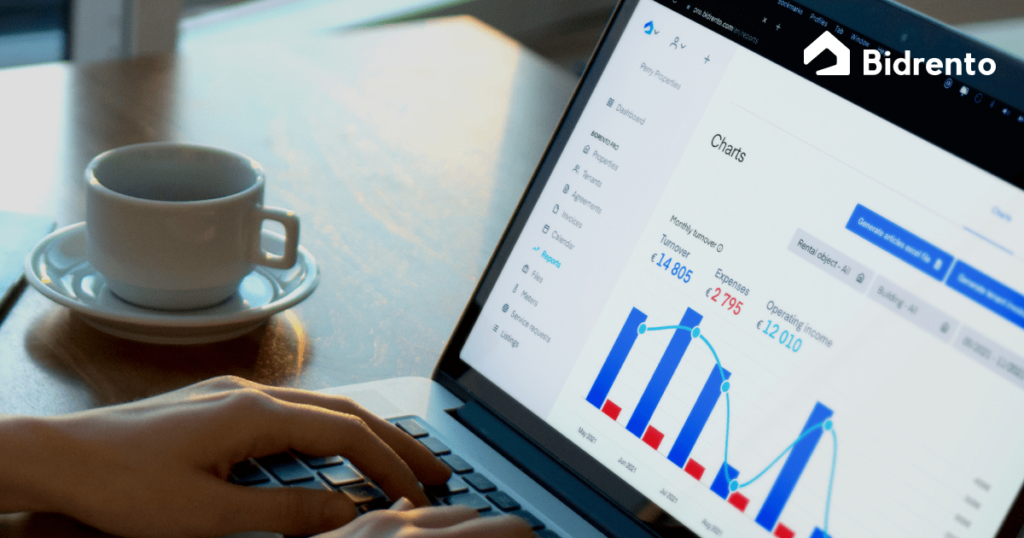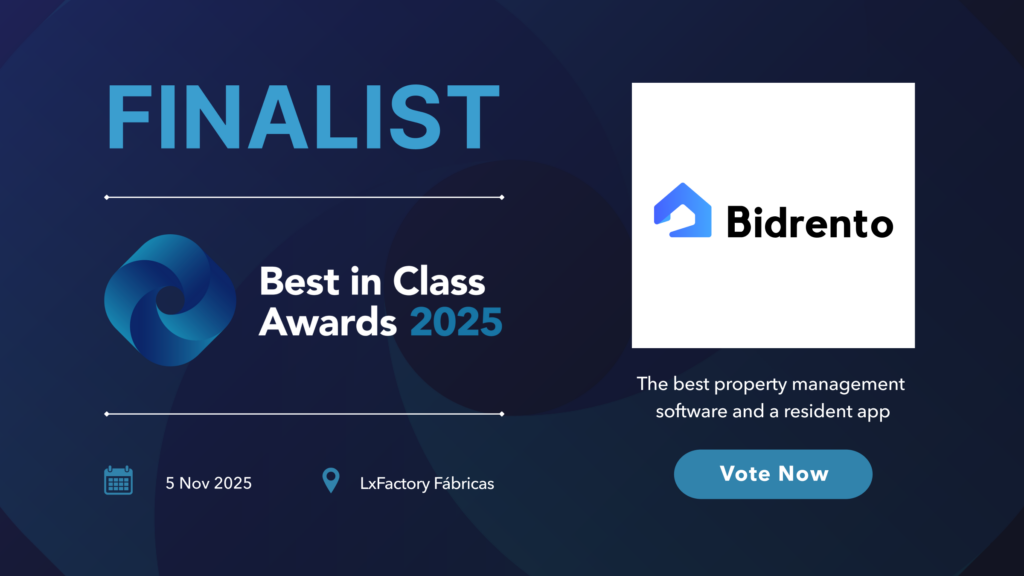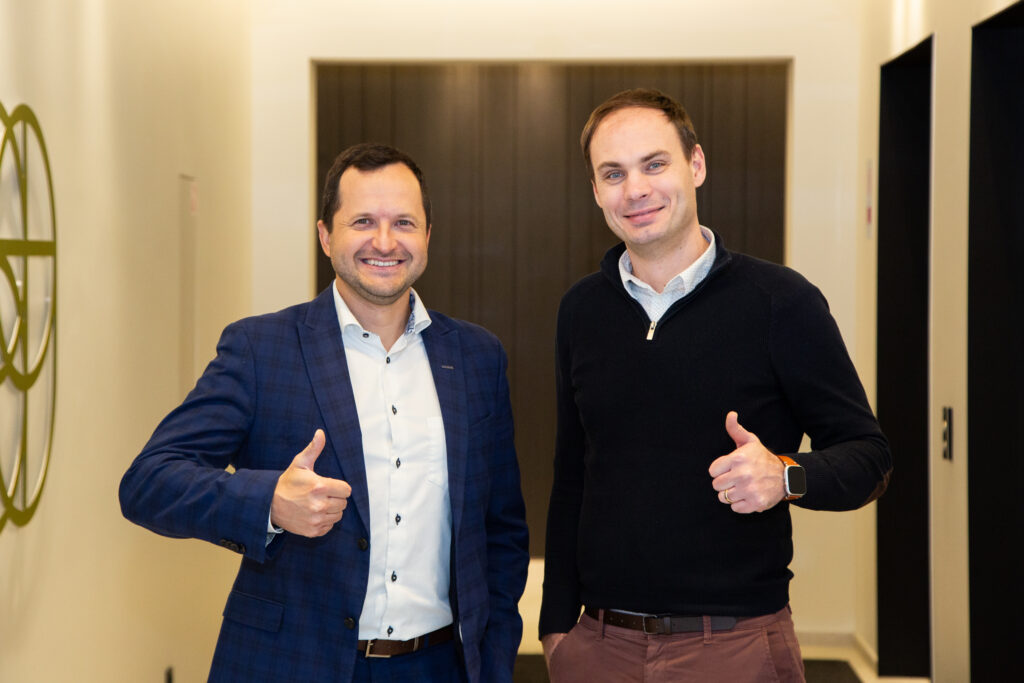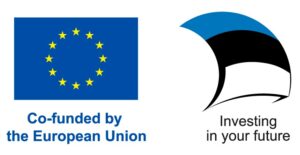What is the best rental property management software that can finally help property managers escape the mountain of maddening paperwork, endless Excel, and hundreds of emails?
For many property managers, finding one remains a daily struggle. They have to juggle multiple tasks, from tracking rent payments to handling tenant complaints, all while trying to maintain accurate records across various systems. These manual processes often result in missed deadlines, late rental payments, frustrated tenants, and a lot of wasted time.
This holds especially true for larger portfolios.
Table of Contents
- Traditional and Outdated Problems in Property Management
- Old School Property Management Software vs New Solutions
- What is the The Best Property Software for Larger Portfolios?
- The Elements of Top Property Management Software (for Everyone)
- Why Bonava Found Bidrento to be the Best Rental Property Software
- Frequently Asked Questions (FAQ) About Property Management Software
The problem goes deeper as newer, yet still limited, property management software leaves much to be desired too. While the software solutions of the past decade and a half have made some aspects of property management easier, many still fall short when it comes to handling larger portfolios, managing multilingual tenants, or automating key processes like invoicing and cost allocation.
These gaps leave property managers spending more time than necessary on tasks that should be fully automated and streamlined.
The truth is, traditional methods and outdated software force landlords to spend hours on manual work. Rent collection becomes a chore, expenses pile up without a clear record, and tenant communication turns into a mess. This isn’t just frustrating — it’s costly.
But there’s a better option. Bidrento offers a way out. It's not just about moving from paper to digital. Bidrento takes everything landlords need and makes it simple.
Traditional and Outdated Problems in Property Management

Managing properties the old-fashioned way was never easy. Even landlords with only a few properties faced daily challenges. Here’s what the typical day looked like:
- Chasing Rent Payments: Without a reliable system, landlords had to collect rent in person or through manual bank transfers. Late payments and constant follow-ups were a regular part of the job.
- Disorganised Expense Tracking: Managing finances was a struggle. Costs were tracked using paper receipts and spreadsheets, both of which are easy to lose or mess up. One mistake could lead to big problems during tax season.
- Unclear Tenant Communication: Landlords relied on phone calls, scattered emails, and even physical letters to stay in touch with tenants. It was messy, hard to manage, and made it difficult to keep a record of everything.
- Maintenance Delays: Tenants would report issues over the phone or email, often leaving landlords scrambling to track requests and find contractors. This caused delays and frustrated tenants.
As portfolios grew, these problems multiplied. Larger portfolios demanded more time and attention, which traditional systems couldn’t handle.
Where Current Software Falls Short
Even modern property management software doesn’t always fix these issues. Many landlords turn to these solutions, expecting a huge improvement, only to be disappointed by missing features and limitations.
- Lack of functionality: There are a lot of property management software providers but usually they are able to provide solutions on very small parts of property management. This means that landlords and property managers need to use on average 5-7 different systems that are not connected and still do 70% of their repetitive tasks manually.
- Limited Automation: Some software automates a few things like rent collection but leaves other tasks, like sending out invoices and expense tracking, up to the landlord. This still eats up valuable time.
- Struggles with Growth: Some platforms work well for small portfolios, but they start to break down as landlords grow their property count. They often lack the tools needed to handle larger-scale operations, like custom reports or handling multiple properties efficiently.
- Language Barriers: Landlords with international tenants or multilingual renters often struggle to communicate through these platforms. Many don’t offer the ability to support tenants in different languages, which can lead to confusion and dissatisfaction.
Even with software, landlords still face many of the same issues that come with manual methods. This makes it hard to manage properties smoothly and often results in lost time, leads to up to 75% of additional labor costs due to inefficiencies and approximately 20% of upsell revenue is lost and never realized.
Why Bidrento Is the Best Choice
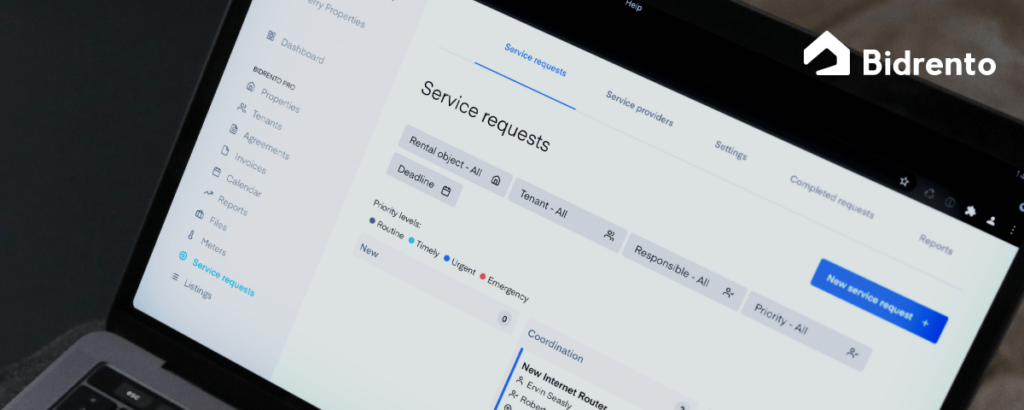
Here’s why Bidrento stands out:
- Full Automation: Bidrento automates everything from rent collection to invoicing and expense tracking. Landlords can stop worrying about entering data or chasing tenants for payments. The system takes care of it all, giving you back your time.
- Built for Growth: Bidrento is designed to grow with you. Whether you have five properties or 5000, the platform handles it effortlessly. It includes features like bulk invoicing, advanced expense tracking, and detailed reporting that help landlords stay organised as their portfolios expand.
- Multilingual Tenant App: Bidrento’s tenant app supports over 50 languages, making it easy to communicate with tenants no matter where they’re from. This keeps tenants happy and makes managing international properties much easier.
If you are looking for the best rental property management software, you need more than a switch from paper to digital. You need a proven platform that helps you and your team manage your properties a lot better than before.
Want to see how Bidrento can change the way you manage your properties? Sign up for a free demo and discover why it’s the best choice for property managers today.
Old School Property Management Software vs New Solutions
Still relying on spreadsheets and emails to manage your properties? There’s a better way.
For years, landlords have used the same old tools — Excel spreadsheets, manual bank transfers, and endless back-and-forth emails — to manage their properties. It worked for a while, but as portfolios grow and tenant needs to become more complex, these methods start to show their limits. Property managers find themselves constantly chasing rent payments, struggling to track expenses, and drowning in paperwork.
Even when some landlords made the switch to older software solutions, they quickly realised that not all software is created equal. Many options fixed a few issues but left landlords with new problems, such as limited features, lack of automation, or poor scalability.
So, how does today’s latest property management software stack up against the old ways and tools?
Old-School Management: A Daily Grind
Let’s start with what old-school property management looked like — and for some landlords, still looks like:
- Manual Rent Collection: Rent was collected through bank transfers, cheques, or even in person. Tracking payments and following up with late tenants took hours every month, leading to missed income and frustrated landlords.
- Paper-Based Expenses: Expenses were often tracked on paper or in messy spreadsheets. This made it difficult to know exactly where the money was going, and it was easy to lose track of key financial details, especially at tax time.
- Scattered Communication: Keeping up with tenant communication through phone calls, emails, and text messages made it hard to stay organised. Important details could easily get lost in the shuffle, causing frustration on both sides.
- Maintenance Headaches: Without a proper system, landlords had no clear way to manage maintenance requests. Tenants would call or email, but tracking repairs and making sure everything was done on time was nearly impossible.
For landlords with a few properties, these problems were a hassle. But as portfolios grew, it became clear that old-school methods were not sustainable. So, many landlords turned to property management software to solve these issues.
Traditional Software: Not Quite There
When property management software first came onto the scene, it seemed like the perfect solution. Rent collection became easier, and some communication tools were introduced. But it didn’t take long for landlords to realise that even some of the most popular property management platforms were missing key features.
Here’s where many traditional property management software options fall short:
- Functionality only for small part of the property management
- Limited Automation: While some tasks, like rent collection, were automated, other important processes—like cost tracking, invoicing, and expense allocation—still required manual input. This left landlords spending too much time on tasks that should have been fully automated.
- Lack of Scalability: Many of the early software platforms were designed with small portfolios in mind. As landlords expanded their property count, these platforms struggled to keep up, with limited features and poor reporting capabilities.
- Focus only on a specific real estate type: only offices, or BtR or warehouses. As a result the landlord or property manager doesn't have any overall overview of the whole portfolio. So you have to constantly switch between multiple tools.
- No Multilingual Support: As rental markets became more global, many landlords needed software that could support multiple languages for both their tenants and team members. However, many traditional software platforms didn’t offer this option, leaving landlords with communication challenges.
So while property management software did offer some improvements over old-school methods, it didn’t fully solve the problems landlords were facing.
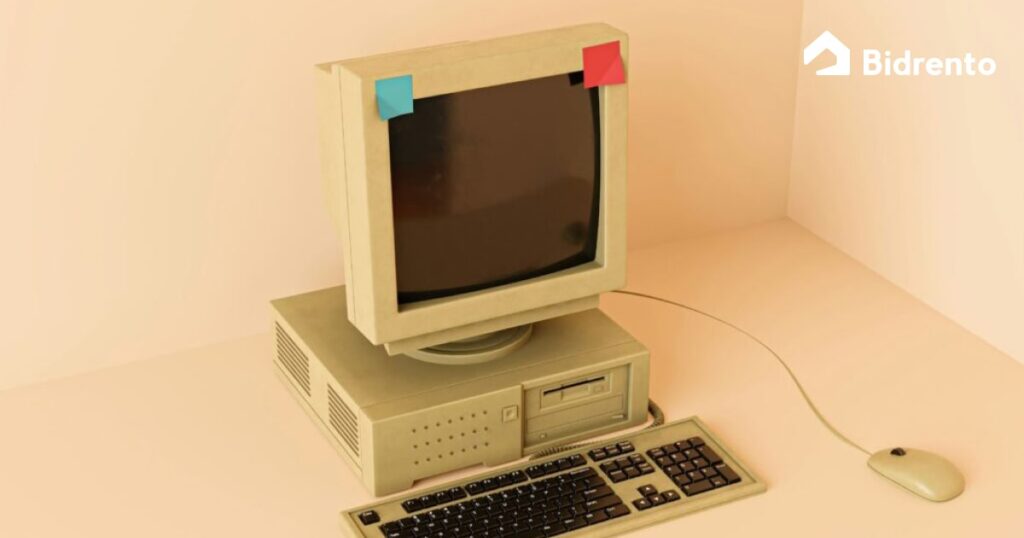
The Deeper Hidden Limitations of Old Software Solutions
It’s true that property management software has been around for a while, but many of the platforms that landlords still use today were designed with even deeper limitations than the three we outlined above.
Three Main Problems with Old Software
- Clunky User Interfaces: Early property management software was often built with outdated design and technology. This means that many of these platforms are not user-friendly. Navigating through endless menus, outdated layouts, and complicated processes frustrates users and adds unnecessary steps to simple tasks. In today’s fast-moving environment, professionals expect software to be intuitive and fast. Landlords shouldn’t need a technical background to operate their property management software, but many older systems demand just that.
- Lack of Integration with Other Systems: Many older property management platforms were developed without considering the need for integration with other business tools. For example, they often don’t connect seamlessly with accounting software, payment gateways, or communication tools like email and messaging platforms. This forces landlords to manually export data from one system to another, which is time-consuming and error-prone. Recent systems, by contrast, integrate with a variety of tools, allowing data to flow smoothly between platforms and saving landlords significant time.
- Limited Mobile Access: Another key limitation of traditional software is its lack of mobile-friendly interfaces. Many older systems are designed for desktop use and don’t function well on smartphones or tablets. This is a serious limitation for property managers who need to work on the go, from meeting tenants to inspecting properties. In today’s mobile-first world, landlords expect to be able to manage their properties from anywhere, not just their desks.
Four Long-Term Problems with Old Software
- Poor Customisation Options: Older software tends to offer a "one-size-fits-all" solution. This means that landlords cannot customise the platform to meet their specific needs. For instance, if a landlord manages properties across different countries, many older systems don’t support different tax laws, currencies, or languages. These platforms often offer rigid features with limited flexibility, forcing landlords to adapt their business processes to the software rather than the other way around.
- Outdated Security Features: Security is a major concern for landlords, especially when dealing with sensitive tenant information, payment details, and financial records. Many older property management systems were built before the rise of present-day cybersecurity threats, and their security protocols may no longer be adequate. Without advanced encryption or regular security updates, landlords risk data breaches or other cyber incidents. Today's software solutions prioritise data security, offering encrypted databases, two-factor authentication, and regular updates to stay ahead of new threats.
- Limited Reporting and Analytics: Older systems often provide basic reporting tools, but they fall short when it comes to advanced analytics. Landlords today need in-depth data to make informed decisions—whether it’s tracking tenant payment patterns, identifying which properties are costing more in maintenance, or forecasting future income. Many traditional software platforms don’t offer the ability to generate custom reports, making it difficult to get insights that can improve decision-making.
- Costly and Complicated Updates: With older software, updates tend to be infrequent, expensive, or even non-existent. These platforms often require manual updates that disrupt day-to-day operations, or they charge hefty fees for upgrading to the latest version. This results in landlords being stuck with outdated features and missing out on important improvements. Modern platforms, by contrast, typically offer cloud-based solutions where updates happen automatically and don’t require additional costs or interruptions.
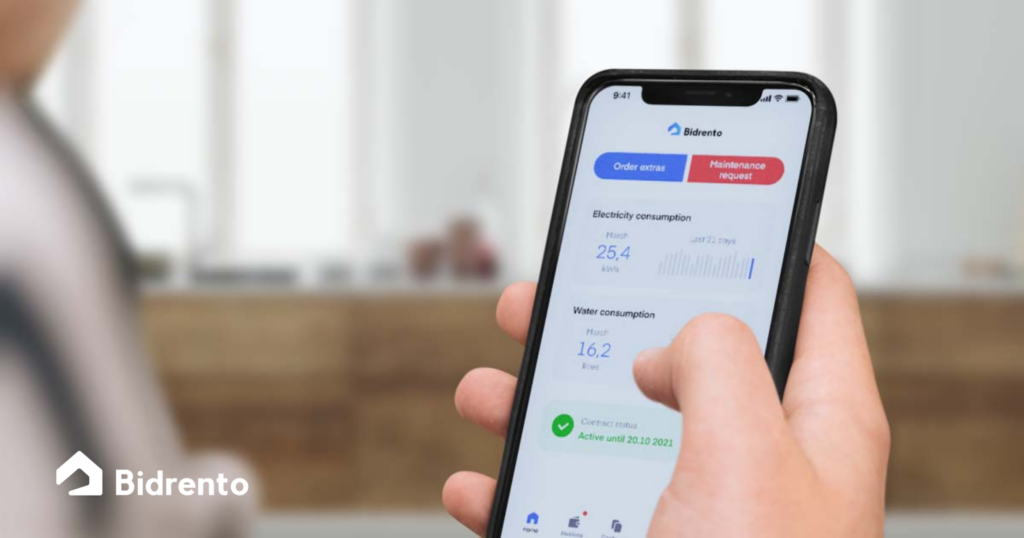
How Bidrento Solves These Problems
Bidrento is a modern solution built for larger property managers or high-growth landlords who want to avoid the frustrations of outdated software.
Here’s how Bidrento stands out as the best rental property management software:
- Intuitive and User-Friendly Design: Bidrento’s interface is designed with simplicity and efficiency in mind. The platform is easy to navigate, meaning landlords can manage properties without needing a technical background. It’s built to save time by reducing the number of steps required to complete everyday tasks.
- Seamless Integrations: Bidrento integrates with accounting software, payment gateways, access systems and smart locks, providing a smooth workflow from one system to another. This eliminates the need for manual data entry, reducing errors and improving overall efficiency.
- Mobile-First Access: Bidrento is fully optimised for mobile use, allowing landlords to manage their properties from anywhere. Whether it’s responding to a tenant request or checking payment statuses, landlords can do it all on their phone or tablet.
- Customisable Features: Bidrento doesn’t force landlords into a rigid framework. The platform is fully customisable, allowing landlords to adjust settings based on their specific needs—whether it’s setting different tax rules for international properties or creating unique expense categories.
- Top-Notch Security: Bidrento prioritises security with advanced encryption, SSO, and regular security updates. This guarantees that sensitive data remains protected, giving landlords peace of mind.
- Advanced Reporting and Analytics: Bidrento offers powerful reporting tools that provide detailed insights into property performance. Landlords can generate custom reports on everything from tenant payment trends to maintenance costs, helping them make data-driven decisions.
- Automatic Updates: With Bidrento, landlords don’t have to worry about manual or costly updates. The platform is cloud-based, so updates happen automatically without disrupting business operations or charging extra fees.
Compare Different Approaches
By addressing the unique pain points of older software, Bidrento offers the best rental property management solution that goes beyond basic features. It’s designed to simplify processes, reduce errors, and help landlords manage properties efficiently—whether they’re handling a small portfolio or managing hundreds of units across different locations.
| Feature | Old-School Management | Traditional Software | Bidrento |
| User Interface | Complex and outdated | Clunky and hard to use | Clean, intuitive, and user-friendly |
| Integration with Other Systems | Manual data transfer required | Limited integrations | Seamless integration with key tools |
| Mobile Access | None, desktop-only | Limited | Fully mobile-optimised |
| Customisation | One-size-fits-all | Basic features, little flexibility | A wide range of options |
| Security | Minimal protections | Outdated security features | Advanced encryption and regular updates |
| Reporting & Analytics | Basic, limited | Standard reports, little customisation | Advanced, fully customisable reporting |
| Updates | Manual, costly, and disruptive | Infrequent and expensive | Automatic and hassle-free |
Ready to see how Bidrento can improve your property management? Sign up for a free demo today and experience a modern solution built for landlords like you.
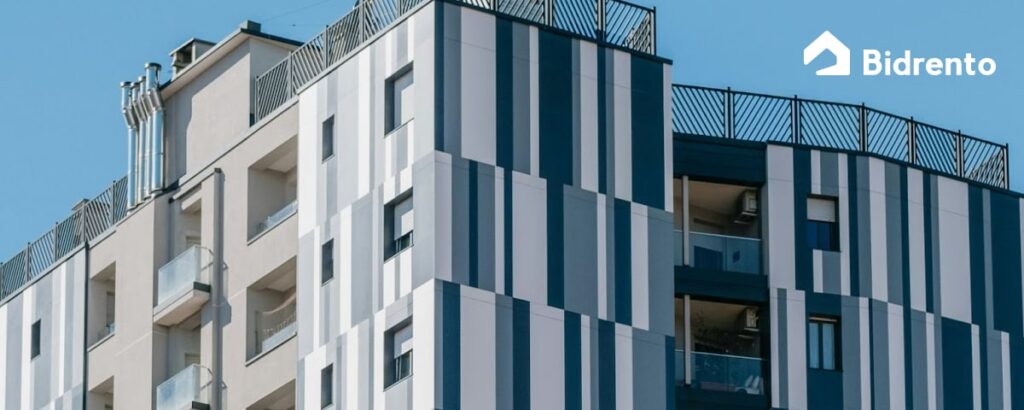
What is the The Best Property Software for Larger Portfolios?
Managing a large portfolio feels overwhelming — unless you have the right tools in place.
As portfolios grow, the complexity of property management grows with it. What worked well for 10 or 20 properties quickly starts falling apart when you’re managing 500, 10 000, or more. Property managers face challenges that aren’t just about scale but about the unique pressures that come with handling so many moving parts at once. It’s not just about the number of properties but the range of issues that multiply as the portfolio expands—issues that most older property management systems simply aren’t equipped to handle.
Larger property portfolios bring problems that go beyond rent collection and maintenance. The more properties a landlord manages, the more they deal with financial complexity, inconsistent processes, tenant communication gaps, and administrative overload. Even traditional property management software can fall short, leaving landlords drowning in data but lacking real solutions.
Let’s take a look at these hidden pain points. You will see how Bidrento is specifically designed to address them in ways that other platforms just can’t match.
The Unique Problems of Managing Large Portfolios
Handling larger portfolios isn’t simply about scaling up the number of properties you manage.It introduces entirely new complexities and problems that smaller landlords never encounter. Here are the unique pain points faced by large portfolio managers:
Three Overall Problems
- Fragmented Data and Reporting: As portfolios grow, data becomes harder to manage. Landlords with large portfolios need to juggle information from multiple sources—rental payments, expenses, tenant details, and legal documents. Most property management systems don’t offer a unified view of this data. Most platforms leave landlords to manually compile reports from scattered sources. This creates inefficiency, but it gets even worse. It limits decision-making because landlords don’t have a clear, real-time picture of their portfolio’s performance.
- Inconsistent Processes Across Properties: For large portfolio managers, maintaining consistent processes across properties is a massive challenge. Different properties might have different contractors, maintenance teams, or local regulations. Without a system that standardises processes and workflows, landlords are left to manage each property separately. This situation leads to inefficiencies, delayed responses, and inconsistent service quality. This can quickly frustrate tenants and drain resources.
- Overwhelming Administrative Burden: Larger portfolios inevitably come with more paperwork. Every tenant comes with a lease, a maintenance history, and a financial record, and every property requires tax documentation, insurance, and compliance checks. For landlords managing dozens or hundreds of properties, this can lead to administrative overload. The need to constantly switch between different systems to handle this volume of work becomes a major drain on time and resources, making property managers feel like they are drowning in paperwork.
Three Long-Term Problems
- High Tenant Turnover and Vacancy Management: One of the most overlooked problems of large portfolios is managing high tenant turnover. As the number of properties increases, so does the likelihood of dealing with tenant transitions, evictions, and vacancies. Managing lease renewals, turnover cleaning, and filling vacancies across multiple properties can become chaotic if not properly tracked. This results in longer vacancy periods, lost income, and higher costs for repairs and renovations.
- Financial Complexity and Allocation Problems: Large portfolios often mean shared utilities, bulk contracts, and cost-sharing across multiple properties or units. Tracking these expenses and allocating them correctly becomes a headache, especially when older software or manual systems require landlords to break down costs themselves. This is more than just an administrative burden—it can lead to financial inaccuracies, overpayments, or missed deductions that cost landlords real money.
- Tenant Communication Gaps: Larger portfolios mean more tenants to communicate with, and when landlords manage properties across multiple locations, this becomes even more complicated. Tenants often feel neglected if their concerns aren’t addressed quickly. Communication tends to slip through the cracks when landlords rely on scattered emails or separate messaging tools for each property. Worse still, when tenant concerns go unanswered, it leads to dissatisfaction, poor reviews, and a higher likelihood of turnover.
These issues aren’t just inconvenient—they directly impact a landlord’s ability to scale their portfolio profitably. If these problems go unchecked, landlords spend more time putting out fires than growing their business.
Why Older Solutions Fall Short for Large Portfolio Management
Even traditional property management software, while an improvement over manual processes, isn’t designed to meet the specific needs of large portfolio managers. Older platforms often focus on automating simple tasks like rent collection or maintenance requests, but they don’t address the complexity that comes with scaling a portfolio. Here’s why they fall short:
- Limited Financial Tools: Traditional software often lacks the advanced financial tools that large landlords need to manage complex cost allocation and shared expenses. They might offer basic tracking but fail to break down costs in a way that aligns with real-world complexities like multi-unit utilities or portfolio-wide repairs.
- Poor Integration with Other Systems: Larger landlords often rely on multiple platforms—accounting software, tenant communication tools, and maintenance tracking systems. Many older property management platforms don’t integrate well with these systems, leaving landlords to manually sync data, which wastes time and increases the risk of error.
- Lack of Scalability: Older platforms are often built for smaller portfolios. As property managers grow their business, they quickly realise that these systems weren’t built to handle hundreds of properties or the complexity that comes with them. They may become slow, buggy, or simply unable to generate the reports and insights that large landlords need.
- Inflexible Reporting: Large landlords need detailed, customisable reports to stay on top of their business. Traditional software often provides only standard, pre-built reports, which might work for small portfolios but fall short for larger operations that need granular data.
Meet Bidrento
This is where Bidrento comes in. Not as just another platform, but as the best rental property management software designed to solve the unique challenges of large-scale property management.
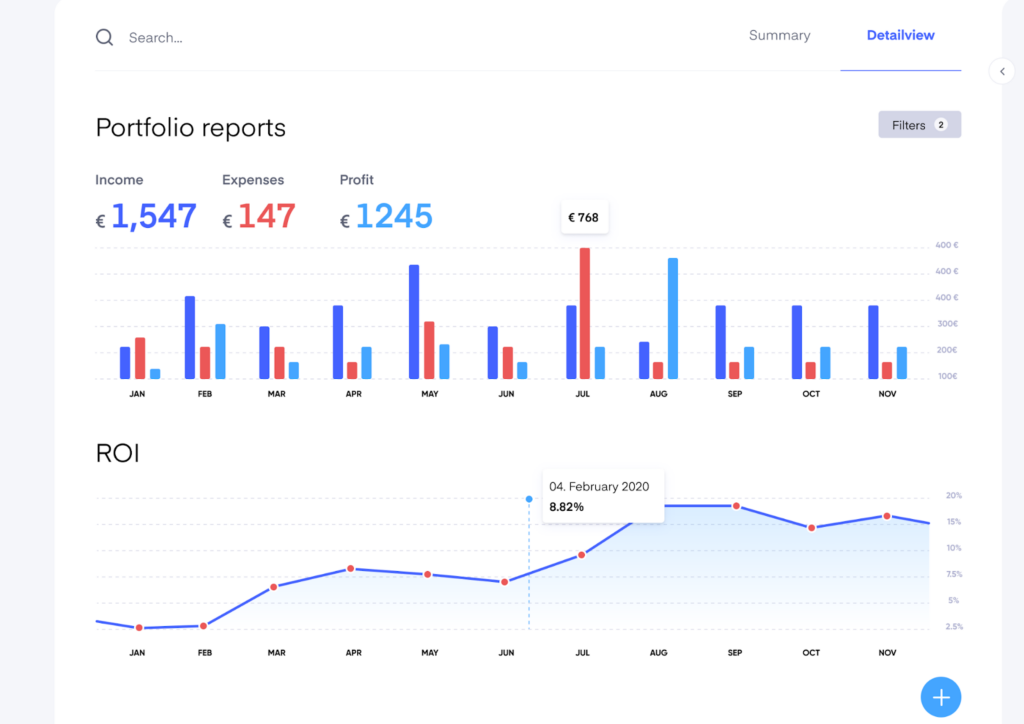
How Bidrento Solves These Unique Problems
Bidrento offers a range of features specifically built to tackle the pain points of large property portfolios. it’s a complete system that helps landlords stay organised, save time, and grow their business. Here’s how Bidrento stands out:
Three Main Benefits: Huge Time-Savers
- Unified Data Platform: Bidrento pulls all of your portfolio’s data into one place. Instead of managing different systems for rent collection, tenant communication, and expense tracking, Bidrento consolidates everything in a centralised platform. This provides landlords with real-time insights into their portfolio’s performance and makes reporting faster and easier. Large landlords can quickly generate detailed reports across all properties without having to manually compile data from multiple systems.
- Standardised Workflows: Bidrento helps large landlords maintain consistent processes across properties, no matter how many locations they manage. Whether it’s maintenance requests, contractor management, or rent collection, Bidrento standardises workflows to see to it that every property operates smoothly. This is crucial for large portfolio managers who need to maintain service quality while scaling.
- Automation of Administrative Tasks: Bidrento automates the repetitive administrative tasks that eat up landlords’ time. Lease agreements, maintenance histories, and financial records are all stored and organised in one place. This reduces the amount of paperwork landlords have to manage manually and frees up time to focus on strategic growth.
Three Long-Term Benefits: Generating More Net Cash-Flow
- Tenant Turnover Management: Bidrento offers tools to manage tenant transitions efficiently. From lease renewals to vacancy tracking, using the platform makes certain that landlords don’t miss any important steps during the turnover process. This reduces the amount of time units stay vacant and helps landlords maintain steady cash flow.
- Advanced Cost Allocation Tools: Bidrento simplifies the financial complexity that comes with large portfolios. The platform allows landlords to easily allocate shared expenses across multiple units or properties, establishing accuracy and transparency. This reduces the risk of overpaying contractors or misallocating funds and helps landlords stay on top of their financial health.
- Centralised Tenant Communication: Bidrento’s tenant app offers a centralised communication platform for landlords and tenants. Tenants can submit requests, ask questions, and make payments through the app, and landlords can respond from one system. This secures that communication is clear, quick, and trackable, helping landlords reduce turnover by addressing tenant concerns efficiently.
Comparison: Traditional Software vs. Bidrento for Large Portfolios
| Feature | Traditional Software | Bidrento |
| Data Management | Fragmented, requires manual compilation | Unified platform with real-time data |
| Process Consistency | Inconsistent across properties | Standardised workflows across all properties |
| Cost Allocation | Manual, prone to errors | Advanced, automated cost allocation |
| Tenant Turnover Management | Basic tracking, manual follow-up | Automated tools for lease renewals and vacancy tracking |
| Administrative Burden | High, requires multiple systems | Low, automated and centralised processes |
| Tenant Communication | Scattered across emails or messaging tools | Centralised, trackable, and multilingual support |
| Scalability | Limited, struggles with large portfolios | Scales seamlessly with portfolio growth |
| Financial Control | Limited financial insights | Detailed cost tracking, custom reporting |
The Elements of Top Rental Property Management Software
Discover what makes the best rental property management software, well, the best?
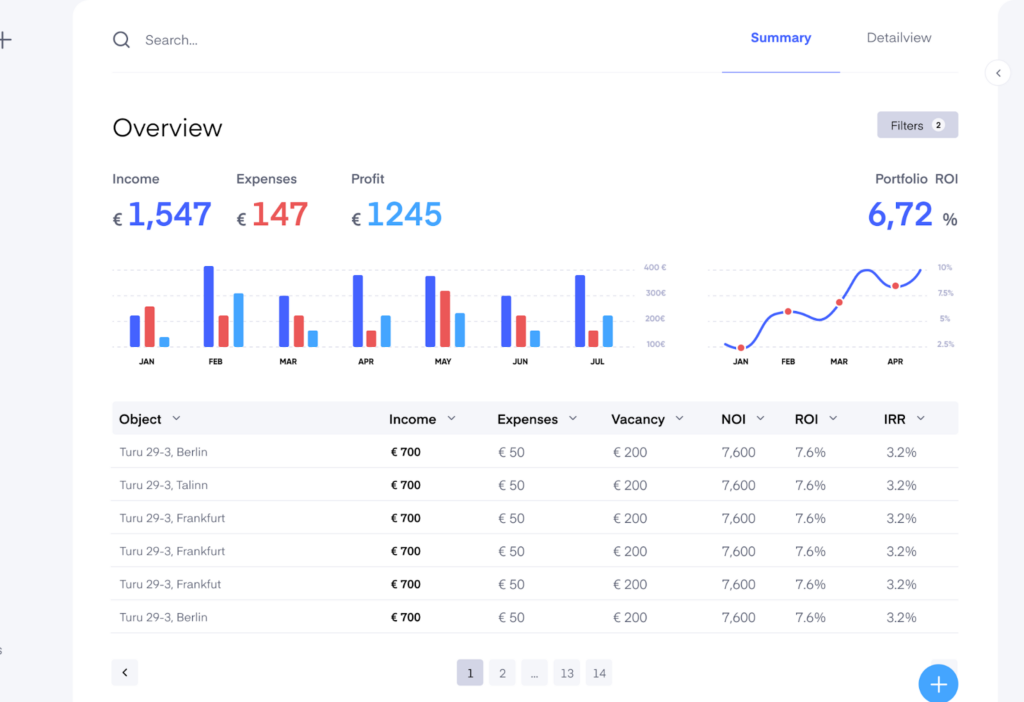
Automating Rental Collections and Invoicing
Tired of chasing tenants for rent payments every month? There’s a better way to do it.
For many landlords, rent collection is one of the most frustrating and time-consuming tasks. Late payments, missed payments, and having to constantly remind tenants to pay on time—it’s a problem that only gets worse as portfolios grow. Trying to manage multiple tenants without a proper system means hours of follow-up work, which often leaves landlords feeling more like debt collectors than property managers.
But rent collection doesn’t have to be this stressful. With Bidrento, landlords can automate the entire process, making sure payments are made on time, every time—without the hassle of reminders, manual tracking, or awkward confrontations with tenants. The right property management software makes all the difference.
Why Automating Rent Collection Matters
Before diving into the steps, let’s take a quick look at why automating rent collection is such a game-changer for landlords:
- Reduces Late Payments: Automating rent collection means tenants receive automatic reminders when rent is due, and payments are processed electronically. This reduces the likelihood of late payments, saving landlords the stress of follow-up.
- Saves Time: Instead of manually checking if tenants have paid each month, automation lets landlords instantly track who has paid and who hasn’t. This cuts down on hours of administrative work.
- Improves Cash Flow: Reliable, on-time payments help landlords maintain steady cash flow, which is critical for paying off mortgages, utilities, and other expenses associated with running a property portfolio.
- Avoids Awkward Conversations: No one enjoys asking tenants for money. Automating rent collection takes this uncomfortable task off the table, allowing landlords to maintain a more professional relationship with tenants.
Why Bidrento Is the Best Solution for Automating Rent Collection
For landlords managing properties — whether a few or hundreds — Bidrento’s automated rent collection system simplifies the process and cuts out the stress. Here’s why Bidrento stands out:
- Customised Rent Schedules: Flexibility for different properties or tenant groups means landlords can set rent schedules that work for their portfolio.
- Multiple Payment Options: Bidrento offers multiple online payment methods, making it easy for tenants to pay on time.
- Late Payment Automation: Automated late payment tracking and penalties reduce the need for landlords to manually follow up.
- Real-Time Tracking: Instant visibility into payments means landlords always know who has paid and who hasn’t.
- Centralised Communication: All rent-related communication happens in one platform, making it easy to stay organised.
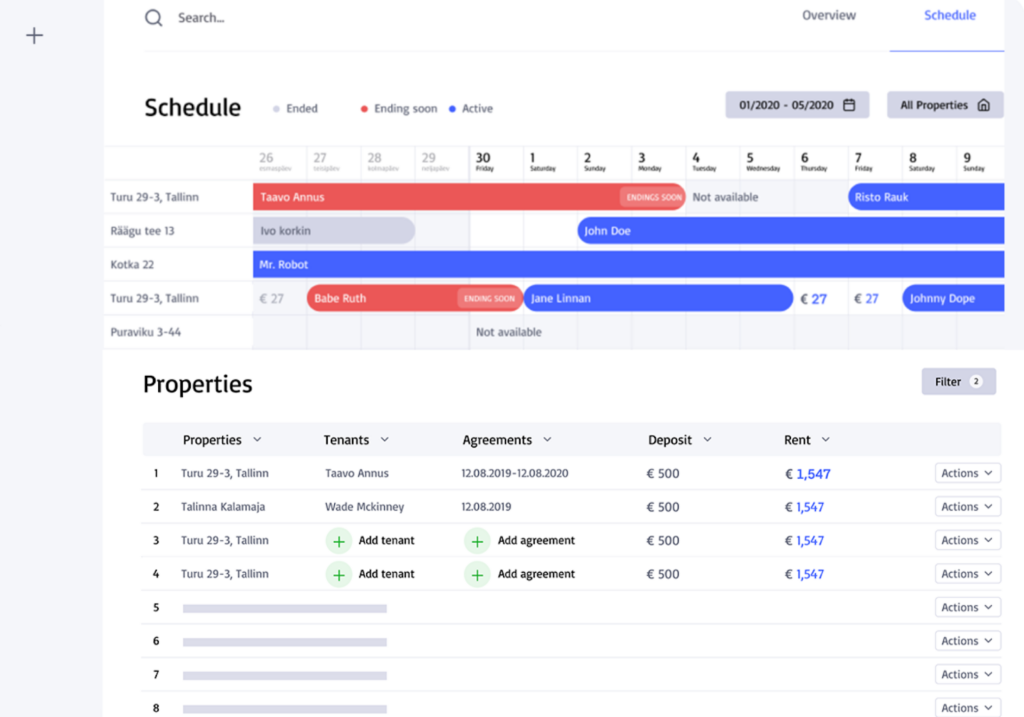
With Bidrento, rent collection becomes seamless. Benefitting both landlords and tenants.
The Role of a Tenant App in Smoother Communication
Managing tenant communication doesn’t have to be a stressful game of phone tag and lost emails.
If there’s one area that creates constant friction in property management, it’s communication. Tenants expect fast responses to their questions and maintenance requests, while landlords often struggle to stay on top of multiple communication channels—emails, phone calls, texts, and even physical letters. Managing these various forms of communication across multiple properties is difficult and inefficient. Important details get lost, requests are delayed, and tenants end up frustrated.
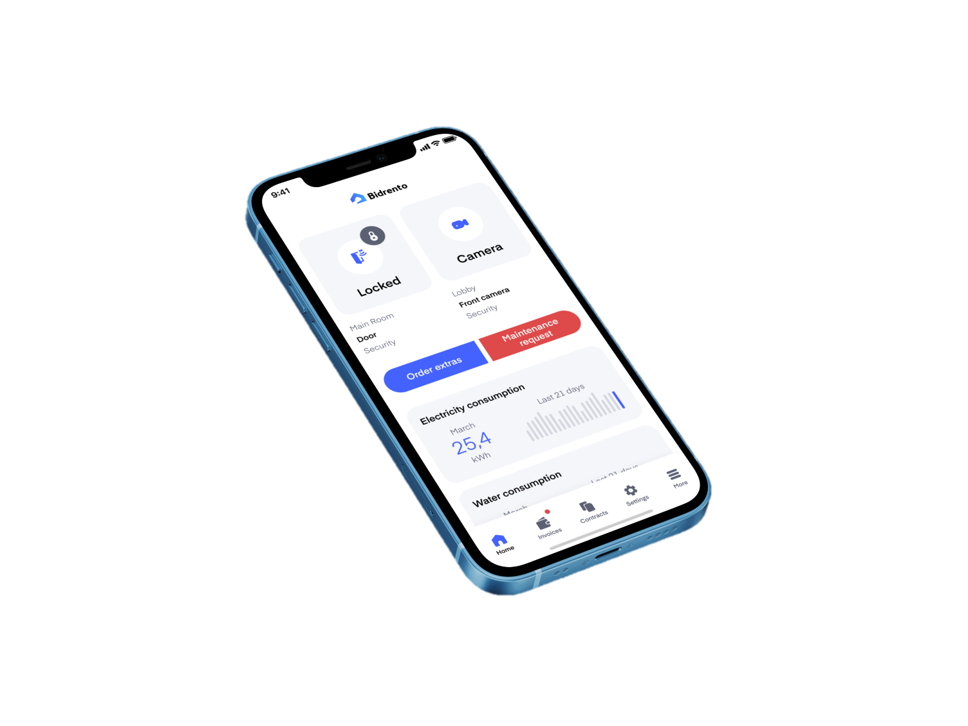
Enter Bidrento’s Tenant App — a simple, powerful tool designed to centralise communication between landlords and tenants. With the tenant app, landlords can keep all conversations and requests in one place. The app makes it easier to respond to tenant concerns quickly and professionally. Tenants, on the other hand, appreciate the convenience of having one app to handle everything from rent payments to maintenance requests.
The Problem with Traditional Communication Methods
Let’s first look at why traditional methods of communication often fail to meet the needs of landlords and tenants:
- Scattered Communication Channels: Landlords often have to juggle several forms of communication at once — email, phone calls, texts, and messaging apps. With communication spread across so many platforms, it’s easy for messages to get lost or delayed. This can cause landlords to miss important tenant requests, such as urgent maintenance needs.
- Slow Response Times: Tenants expect fast responses to their requests, whether it’s about rent, a question about the lease, or reporting a maintenance issue. However, with communication happening over various channels, it’s hard for landlords to keep up, leading to slow response times and frustrated tenants.
- Lack of Record-Keeping: Without a centralised communication platform, keeping track of conversations can be a nightmare. Landlords need to manually track what’s been discussed, follow up on requests, and store important documents like lease agreements or notices. Missing or losing key communication history can lead to tenant disputes or legal complications down the road.
- Limited Communication Hours: Traditional communication methods—phone calls and office visits—are often limited by office hours. Tenants may not be able to reach their landlord outside of these hours, which can cause delays, especially for urgent matters like maintenance emergencies.
These pain points don’t just waste time — they also damage tenant satisfaction. The problems can lead to higher turnover rates and a greater likelihood of vacancies.
How Bidrento’s Tenant App Solves These Issues
Bidrento’s tenant app is designed to address these communication challenges head-on. Providing a simple, effective solution for both landlords and tenants. Here’s how it works:
Three Instant Benefits of the Bidrento Tenant App
- Centralised Communication: The tenant app brings all communication into one place, making it easy for landlords to manage requests, messages, and updates. Tenants submit all their questions, requests, and concerns through the app, so nothing gets lost in emails or missed phone calls. Landlords can respond directly through the app, keeping everything organised and trackable.
- Real-Time Messaging: The app enables real-time messaging between landlords and tenants. This means that tenants no longer have to wait for emails or phone calls to be returned—they can send a message through the app and receive a timely response. For landlords, this reduces the number of missed messages and helps them address tenant concerns quickly.
- Maintenance Request Tracking: One of the most frustrating aspects of property management is dealing with maintenance requests. With Bidrento’s tenant app, tenants can submit maintenance requests directly, attach photos of the issue, and track the status of their request in real-time. Landlords can assign these requests to contractors, track progress, and update tenants, verifying that repairs are completed quickly and efficiently.
Three More Benefits Your Tenants Will Love
- Automated Notifications: Tenants receive automatic notifications through the app for important updates—like rent reminders, lease renewal notices, or maintenance completions. This reduces the need for landlords to manually follow up on each task and guaranteeing that tenants stay informed without landlords having to send out multiple messages.
- Multilingual Support: Communication barriers often arise when landlords and tenants speak different languages, especially in larger portfolios with international tenants. Bidrento’s tenant app supports over 50 languages, allowing landlords to communicate clearly with tenants regardless of language. This feature is especially valuable for landlords managing diverse tenant bases or properties in multiple countries.
- Extra services ordering: All modern Landlords and Property Managers already know that the tenancy is not just simply renting the space. Nowaday renting is becoming more like an experience and to be able to offer such experience, you have to have digital tools supporting such things. And it is not only about the tenants, offering additional services to your tenants enables you to grow your revenue on average by 20%.
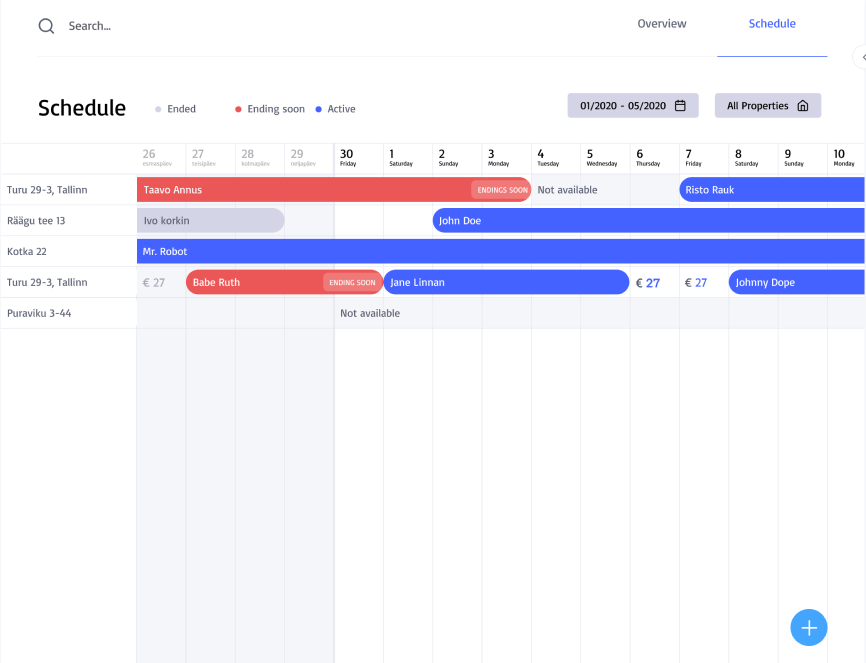
Many traditional property management software solutions offer basic communication tools. But these tools often fall short of what’s needed to maintain smooth communication, especially in larger portfolios.
Want to see how Bidrento’s tenant app can improve communication with your tenants? Sign up for a free demo and experience the convenience and efficiency of Bidrento’s all-in-one platform.
Advanced Cost Allocation
Struggling to keep track of shared expenses across multiple properties? Bidrento’s cost allocation tools can save you time and reduce errors.
For landlords managing a growing portfolio, keeping track of expenses can quickly become a nightmare. Whether it’s splitting utility bills between tenants, assigning maintenance costs to specific properties, or dealing with bulk purchases, proper cost allocation matters. Without the right tools, landlords are left manually calculating and assigning expenses. The manual work increases the risk of errors and can lead to financial headaches.
Bidrento’s advanced cost allocation tools simplify this process. Automating expense tracking and confirming that every dollar is correctly allocated across properties, tenants, or units. In this guide, we’ll walk through how to set up and manage cost allocation in Bidrento, step by step.
Why Cost Allocation Matters
Before we dive into the specifics of setting up advanced cost allocation, let’s take a moment to understand why it’s so important for landlords. Especially those managing larger portfolios:
- Accurate Expense Tracking: Misallocating expenses can lead to inaccurate financial reports, which affect your bottom line. When costs aren’t properly assigned, landlords may end up absorbing more expenses than necessary or charging tenants incorrectly.
- Easier Financial Planning: With clear, accurate cost allocation, landlords can easily identify which properties or units are costing more and adjust their budgets accordingly. This also helps in understanding profit margins across the portfolio.
- Streamlined Accounting: For tax purposes, cost allocation ensures that all deductions and expenses are properly tracked. This reduces the risk of audits and simplifies the process of preparing financial documents for tax season.
- Improved Tenant Relations: Clear and accurate billing means fewer disputes with tenants. When tenants see a transparent breakdown of costs—like utilities or shared maintenance—they’re less likely to question charges, leading to smoother relationships.
Why Bidrento Is the Best Rental Property Management Software for Cost Allocation
If you manage multiple properties, Bidrento’s cost allocation tools offer a better way to manage shared expenses. Here’s why Bidrento stands out:
- Customised Expense Categories: Tailor your expense tracking to fit your specific portfolio, making it easy to organise and allocate costs.
- Automated Expense Splitting: With Bidrento, shared expenses are automatically split according to your pre-set rules, reducing the time spent on manual calculations. You can split by:
- By the number of people.
- By actual consumption.
- By properties.
- By a coefficient.
- By a percentage.
- Clear Reporting: Generate detailed, customisable reports that show exactly how expenses are being allocated, ensuring transparency with tenants.
- Integrated Invoicing: Combine rent and shared expenses in a single invoice, simplifying the payment process for tenants and reducing administrative work for landlords.
With Bidrento, landlords can handle complex cost allocations with ease, making sure that every dollar is accurately tracked and allocated.
Summary
Bidrento helps manage commercial, residential, and short-stay rentals 4x faster by replacing countless tools and spreadsheets with one simplified platform. Thus, it is the only true solution for the modern mixed portfolio: the best rental property management software for short-term rentals as well as many other types of property that inevitably will be part of your portfolio.
- Boost tenant retention with an easy-to-use tenant app (our users see a 28% decrease in late payments from tenants).
- Track, assign, and manage property maintenance.
- Manage billing and agreements from one dashboard.
- Integrations with accounting (SAP, Microsoft and local providers).
Don't take our word for it
Office, Warehouses, Co-living, Student Housing property managers, Build-to-Rent, Real Estate funds, and Municipalities across Europe are already using Bidrento's property management.
"Bidrento has automated all key aspects of our CRE operations, from invoicing and cost allocation to rent indexation and deadline management. Everything is streamlined, saving us time and reducing errors. As a bonus, the maintenance module allows our facility managers to handle preventive tasks efficiently." - Alexander Novak, Commercial Real Estate Manager
Why Bonava Found Bidrento to be the Best Rental Property Management Software
Even the biggest players in property management need smart solutions — here’s how Bidrento helped Bonava with its operations.
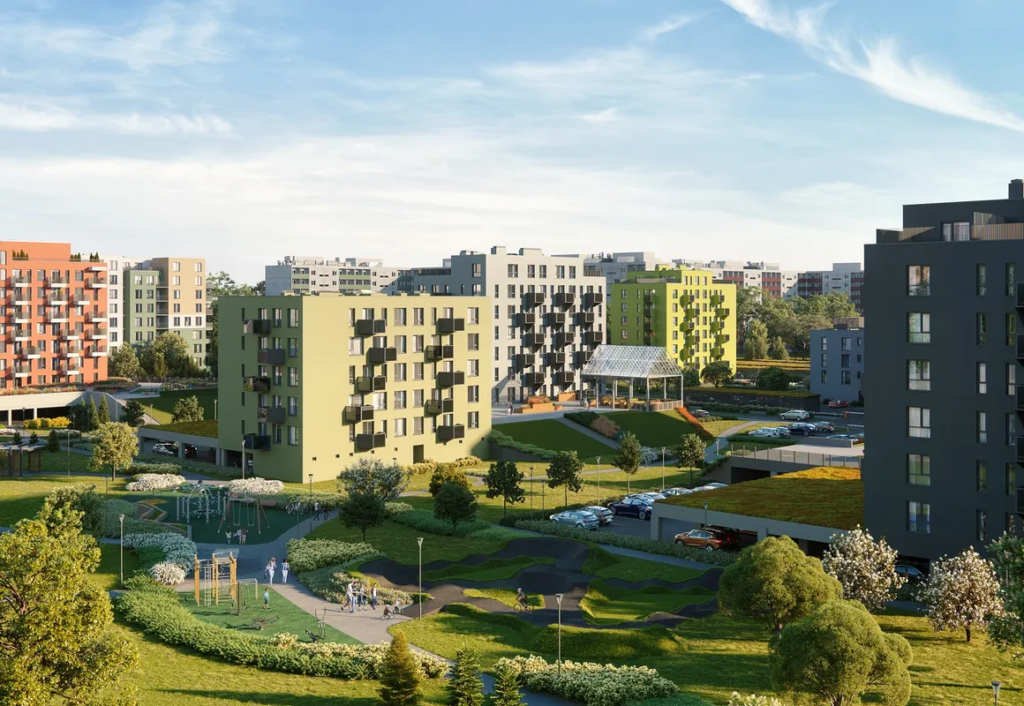
Managing a large portfolio of rental properties isn’t just a matter of scale. It comes with layers of complexity that demand more than just basic software.
Bonava is one of the biggest residential developers in Northern Europe. Their team faced big challenges when they entered the build-to-rent market. Managing properties across different countries with varying rules was tough. They also needed to improve how they communicated with tenants and managed complex financial tasks like splitting shared costs across multiple properties.
Here’s how Bidrento helped them fix these problems.
The Problems Bonava Faced
- Managing Properties Across Regions: Bonava had properties in different countries, each with its own laws and tax rules. Keeping everything organised was difficult.
- Tenant Communication: With hundreds of tenants, keeping up with their questions, rent issues, and maintenance requests across different communication channels was hard.
- Tracking Costs: Dividing shared expenses, like utilities or maintenance, among tenants took up a lot of time and often led to mistakes.
- Manual Administrative Work: Tasks like sending rent invoices and reminders were repetitive and took up too much of the property managers’ time.
- Language Barriers: With tenants speaking many different languages, communication often got confusing, leading to errors and delays.
How Bidrento Solved These Problems
Bidrento helped Bonava with a set of easy-to-use tools that made managing their properties simpler:
- Scalable Multi-Property Management: Bonava could manage all their properties from one platform, even if they were in different countries. The system made it easier to follow local rules and keep everything organised.
- Centralised Tenant Communication: Using Bidrento’s tenant app, Bonava could manage all tenant questions, maintenance requests, and updates in one place. This saved time and helped tenants get faster responses.
- Multilingual Support: With Bidrento’s support for over 50 languages, Bonava could communicate clearly with tenants no matter what language they spoke. This reduced misunderstandings and improved tenant satisfaction.
- Automated Invoicing and Cost Allocation: Bidrento automated rent invoices and split shared expenses, such as utilities or maintenance, among tenants fairly and accurately. This saved Bonava’s team a lot of manual work and reduced mistakes.
- Detailed Reporting: Bidrento’s real-time reporting tools gave Bonava an instant overview of their finances, helping them track expenses, rent collection, and more. This made it easier for them to make decisions and keep their business profitable.
The Results
By using Bidrento, Bonava was able to:
- Save Time: Automation cut down the time spent on repetitive tasks, letting their team focus on more important things.
- Improve Tenant Satisfaction: Tenants were happier because communication was faster, clearer, and available in their own language.
- Gain Better Financial Control: With clearer expense tracking and automated cost allocation, Bonava avoided costly errors. Thus, they had a better view of their financial health.
- Scale Easily: As Bonava continued to grow, Bidrento’s platform grew with them, letting them expand without needing to switch systems.
Read the entire case study here.
Frequently Asked Questions (FAQ) About Property Management Software
1. What is property management software, and why do I need it?
Property management software is a digital tool that helps landlords and property managers automate and streamline tasks like rent collection, tenant communication, maintenance requests, and financial tracking. For anyone managing more than a few properties, it becomes necessary to have a platform that saves time and reduces human error. With the right software, landlords can avoid common headaches like missed payments or lost communication with tenants.
2. Can property management software handle different types of properties?
Yes, for example, Bidrento property management software is designed to manage multiple properties. Whether you’re managing residential units, commercial spaces, or even a mix of both, the software provides tools to track rent, handle maintenance, and keep financial records in order across all your properties.
3. How much does property management software cost?
Property management software solutions like Bidrento usually offer flexible pricing plans based on the number of units managed. Its pricing is transparent, allowing landlords to choose a plan that fits their portfolio size. Custom quotes are also available for larger portfolios with specific needs.
4. How secure is Bidrento?
Bidrento takes data security seriously. The platform uses encryption and other advanced security measures to protect sensitive information, such as tenant data and financial records. This makes sure that your data remains safe from breaches or unauthorised access.
5. Does Bidrento offer support and training?
Yes, Bidrento offers extensive customer support and training to ensure that users can maximise the platform’s features. Whether you are just starting or need ongoing assistance, Bidrento provides resources to help you manage your properties more effectively.
Want to see how Bidrento can help you manage your properties better? Sign up for a free demo today and discover how Bidrento can simplify your work and improve tenant satisfaction.
